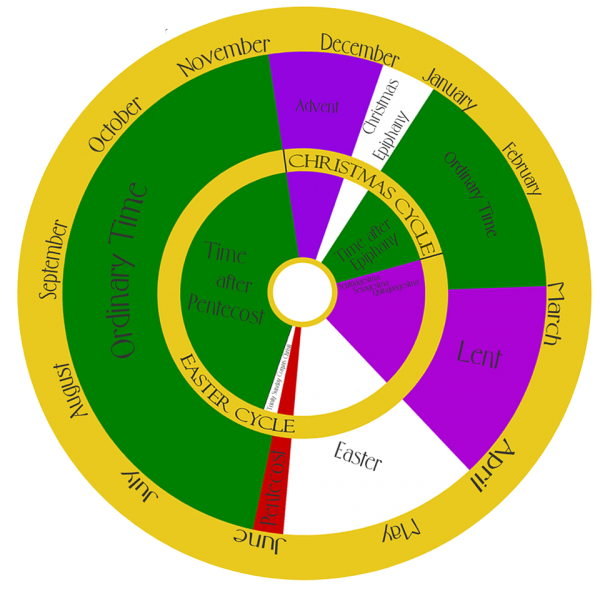Ask the Verger: Liturgical Colors

Liturgical Colors The use of colors to differentiate liturgical seasons became a common practice in the Western church in about the fourth century. At first, usages varied considerably but by the 12th century Pope Innocent III systematized the use of five colors: Violet, White, Black, Red and Green. The Lutheran and Anglican churches that emerged from the Reformation retained the traditional colors but they disappeared entirely (along with most other ritual) from the worship of the Reformed churches. During the 20th century, the ecumenical Liturgical Movement prompted the rediscovery of ancient Christian ritual—including the traditional colors of the Western church. To these have been added Blue and Gold—colors that were used in some Western rites before the 12th century. Briefly, the colors express emotions and ideas that are associated with each of the seasons of the liturgical year. Violet is the ancient royal color and therefore a symbol of the sovereignty of Christ. Violet is also associated with repentance from sin. White and Gold symbolize the brightness of day. Black is the traditional color of mourning in some cultures. Red evokes the color of blood, and therefore is the color of martyrs and of Christ’s death on the Cross. Red also symbolizes fire, and therefore is the color of the Holy Spirit. Green is the color of growth. Blue is the color of the sky and in some rites honors Mary. Vestments are often worn as reminders of the emotional focus of the seasons.
- Green: The color of vestments used during ordinary time. (Ordinary time is the rest of the year that’s not the Christmas or Easter season — it’s still important, it just has an unexciting name.)
- Purple or violet: Used during Advent and Lent, and along with white and black, these colors may also be used at Funeral Masses.
- White and gold: Most appropriate for Christmas and Easter.
- Red: For on feasts of the Passion of Jesus and for the Holy Spirit, representing red tongues of fire, in addition to being worn for the feasts of martyred saints, who shed their red blood for Christ.
- Rose: On the Third Sunday of Advent and the Fourth Sunday of Lent, the color rose may be worn as a sign of anticipated joy
Send your questions to the Verger by clicking here.
~Henderson, Charles. “The Significance of Color in Christian Symbolism” ©2004 September 16, 2004 http:// christianity.about.com/
Tags: Who We Are
